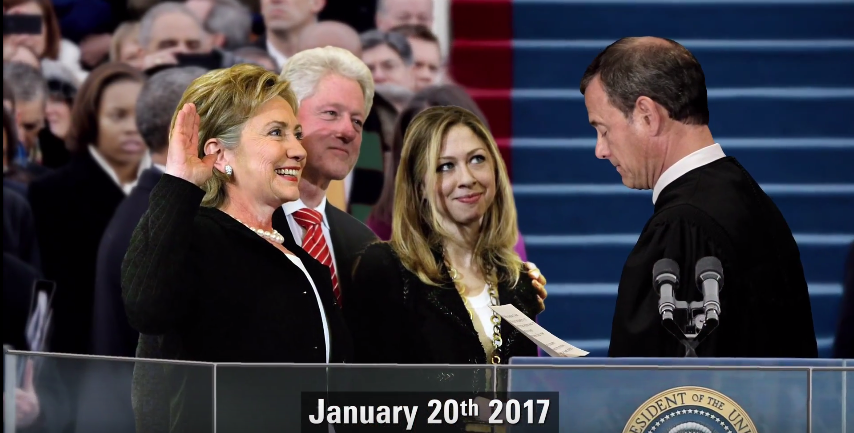Last March, the Supreme Court decided Department of Transportation v. Association of American Railroads. The case raised all sorts of constitutional challenges to how Amtrak can set “metrics and standards” that affect its competitors. Writing for eight Justices, Justice Kennedy found that Amtrak was a governmental entity, and remanded to the D.C. Circuit whether the “metrics and standards” violate the separation of powers and the appointments clause. Justice Alito issued a vigorous opinion raising several other constitutional questions, including whether there is an appointments clause violation, the non-delegation doctrine, and other admin-law abuses. Justice Thomas’s concurring opinion went the full Hamburger, and would have voted to reconsider the development of administration law since the Pope annulled Magna Carta.
On remand from the Supreme Court, a D.C. Circuit panel of Judges Brown, Sentelle, and Williams ruled against Amtrak–in an absolutely fascinating opinion. The Court finds not only a violation of the appointments clause–following Justice Alito’s lead–but also finds a due process violation under the precedent of Carter v. Carter Coal. Judge Brown’s opinion–which is almost certainly going to be subject to an en banc petition–is worthy of a careful study.
Here is the introduction of her opinion:
For the freight operators who challenged PRIIA, however, that decision left three questions unanswered. Conceding Amtrak’s governmental status, the operators— represented by the Association of American Railroads—ask: Does it violate due process for an entity to make law when, economically speaking, it has skin in the game? Does it violate the Appointments Clause for Congress to vest appointment power of a principal officer in the Surface Transportation Board? And is a government corporation whose board is only partially comprised of members appointed by the President constitutionally eligible to exercise regulatory power? We decline to reach the latter question, but we side with the freight operators on the former two. We conclude PRIIA violates the Fifth Amendment’s Due Process Clause by authorizing an economically self-interested actor to regulate its competitors1 and violates the Appointments Clause for delegating regulatory power to an improperly appointed arbitrator.
Judge Brown’s opinion begins with a tribute to Magna Carta, and its influence on our Due Process Clause:
No clause in our nation’s Constitution has as ancient a pedigree as the guarantee that “[n]o person . . . shall be deprived of life, liberty, or property without due process of law.” U.S. CONST. amend. V. Its lineage reaches back to 1215 A.D.’s Magna Carta, which ensured that “[n]o freeman shall be . . . disseised of his . . . liberties, or . . . otherwise destroyed . . . but by lawful judgment of his peers, or by the law of the land.” Magna Carta, ch. 29, in 1 E. Coke, The Second Part of the Institutes of the Laws of England 45 (1797). …
Curbing the misuse of public power was the aim of the Magna Carta, and the Supreme Court has consistently concluded the delegation of coercive power to private parties can raise similar due process concerns.
To resolve this case, Judge Brown turns back to a pre-1937 precedent, Carter v. Carter Coal.
The abstract legal question at the heart of this case is whether it violates due process for Congress to give a self- interested entity rulemaking authority over its competitors. The Supreme Court has confronted the question only once. See Carter v. Carter Coal Co., 298 U.S 238 (1936).
In case you were wondering, the due-process component of Carter v. Carter Coal was never overturned by the Supreme Court. As we learned in NFIB v. Sebelius, Bailey v. Drexel Furniture and other pre-switch-in-time cases–no matter what the professoriate may say– are still on the books. (I actually researched Carter v. Carter Coal for the proposition of shareholder derivative standing, so was familiar of its ongoing validity).
In a sentence that must make the blood boil of all post-New Dealers, Judge Brown writes:
We conclude, as did the Supreme Court in 1936, that the due process of law is violated when a self-interested entity is “intrusted with the power to regulate the business . . . of a competitor.” Carter Coal, 298 U.S. at 311.
During oral arguments, Justice Breyer charged counsel for respondents with going “back to Lochner.”
JUSTICE BREYER: Going back to Carter v. Carter Coal.
MR. GANNON: Yes.
JUSTICE BREYER: We could go back to Lochner.
Brown reads Carter v. Carter Coal as standing for the proposition that Congress cannot delegate power to self-interested firms that use that power to nakedly promote their self-interest.
The power to self-interestedly regulate the business of a competitor is, according to Carter Coal, anathema to “the very nature of things,” or rather, to the very nature of governmental function. Delegating legislative authority to official bodies is inoffensive because we presume those bodies are disinterested, that their loyalties lie with the public good, not their private gain. But here, the majority producers “may be and often are adverse to the interests of others in the same business.” Id. That naked self-interest compromised their neutrality and worked “an intolerable and unconstitutional interference with personal liberty and private property.” Id. Accordingly, the Court invalidated the Act as “so clearly a denial of rights safeguarded by the due process clause of the Fifth Amendment.”
Note that this is not a reversal of the normal rational-basis standard for substantive due process cases, but rather a species of the non-delegation doctrine as applied through the due process clause. But you can be sure that is how the government will characterize it.
The court takes a deep dive into the Framer’s views of rationally-self interested government officials, who would use the power of the state to aggrandize their own authority.
In fact, our Constitution’s ingenious system of checks and balances assumes government officials will act self-interestedly. “Happy will it be if our choice should be directed by a judicious estimate of our true interests, unperplexed and unbiased by considerations not connected with the public good,” the very first installment of the Federalist Papers opined. The Federalist No. 1, at 33 (C. Rossiter ed., 1961) (Hamilton). “But it is a thing more ardently to be wished than seriously to be expected.” Id. And as Alexander Hamilton observed elsewhere: “We may preach till we are tired of the theme, the necessity of disinterestedness in republics, without making a single proselyte.” Alexander Hamilton, The Continentalist No. IV, in 3 The Papers of Alexander Hamilton 99, 103 (Harold C. Syrett ed., 1962). Self-interested lawmaking was not some shocking aberration; it was an unwelcomed expectation, one our Constitution endeavored to channel and check. See The Federalist No. 51, at 321–22 (Madison) (C. Rossiter ed., 1961) (“Ambition must be made to counteract ambition.”).
Ambition must be made to counteract ambition. I couldn’t have said it better than myself.
With this framework, Judge Brown finds that Amtrak is self-interested:
Amtrak’s self-interest is readily apparent when viewed, by contrast, alongside more traditional governmental entities that are decidedly not self-interested. The government of the United States is not a business that aims to increase its bottom line to achieve maximum profitability. Unlike for-profit corporations, government strives—at least in theory—for an equilibrium of revenues and expenditures, where the revenue obtained is no more and no less than the operating costs of the services provided. Amtrak’s charter stands in stark contrast. Its economic self-interest as it concerns other market participants is undeniable.
Under Carter Coal, such a delegation cannot stand:
Armed with coercive regulatory power, Amtrak wields a weapon of considerable advantage in its competitive battle for scarce track. And while the Constitution may grudgingly accept the reality of self-interestedness, it does not endorse it as an unmitigated good.
Congress delegated its legislative power to an entity that it designed to be the opposite of “presumptively disinterested.” Carter Coal, 298 U.S. at 311. Like coal competitors, whose “diversity of view[s]” concerning the challenges of the industry “[arose] from their conflicting and even antagonistic interests,” id., the antagonistic interests of freight operators and Amtrak transform the development of new performance metrics and standards into an unfair game of zero sums.
Judge Brown, joined by Sentelle, previously issued a concurring opinion in Hettinga v. United States that cast serious doubt on the Court’s post-1937 jurisprudence.
The court also finds a violation of the appointments clause, which I will try to address in a later post.
As the foregoing analysis suggests, among the Framers’ chief concerns at the constitutional convention were questions of who should be permitted to exercise the awesome and coercive power of the government. Tyrannous abuse of that power precipitated revolution against Great Britain. Overly restrictive access to it crippled our young nation under the Articles of Confederation. The novel equipoise the Constitution struck was to vest the legislative, executive, and judicial powers in independent branches of government and then empower each to check the others.
One last note. In the event that this case goes en banc, the math is funny because there were two senior judges (Sentelle and Williams) on the panels. The two senior judges don’t get to vote for the case to go en banc, but they do get to sit on the en banc court. If it goes en banc, there would be six judges appointed by Republican Presidents (Brown, Sentelle, Williams, plus Henderson, Griffith, and Kavanaugh). With Garland recused, there would be six judges appointed by Democratic presidents (Rogers, Tatel, Srinivasan, Millett, Pillard, and Wilkins).
As Sean Marotta pointed out on twitter, per D.C. Circuit Rule 35(d), a 6-6 en banc vote affirms “the decision under review.”
If the en banc court divides evenly, a new judgment affirming the decision under review will be issued.
But this case was on direct remand from the Supreme Court. The panel decision today addressed issues that were not addressed by the District Court, and that were decidedly left open by the Supreme Court’s decision. I think this would have the effect of “affirming” the judgment for the government, without endorsing any of the reasons why they win. This lineup could ensure that the issue makes a repeat trip to SCOTUS.

